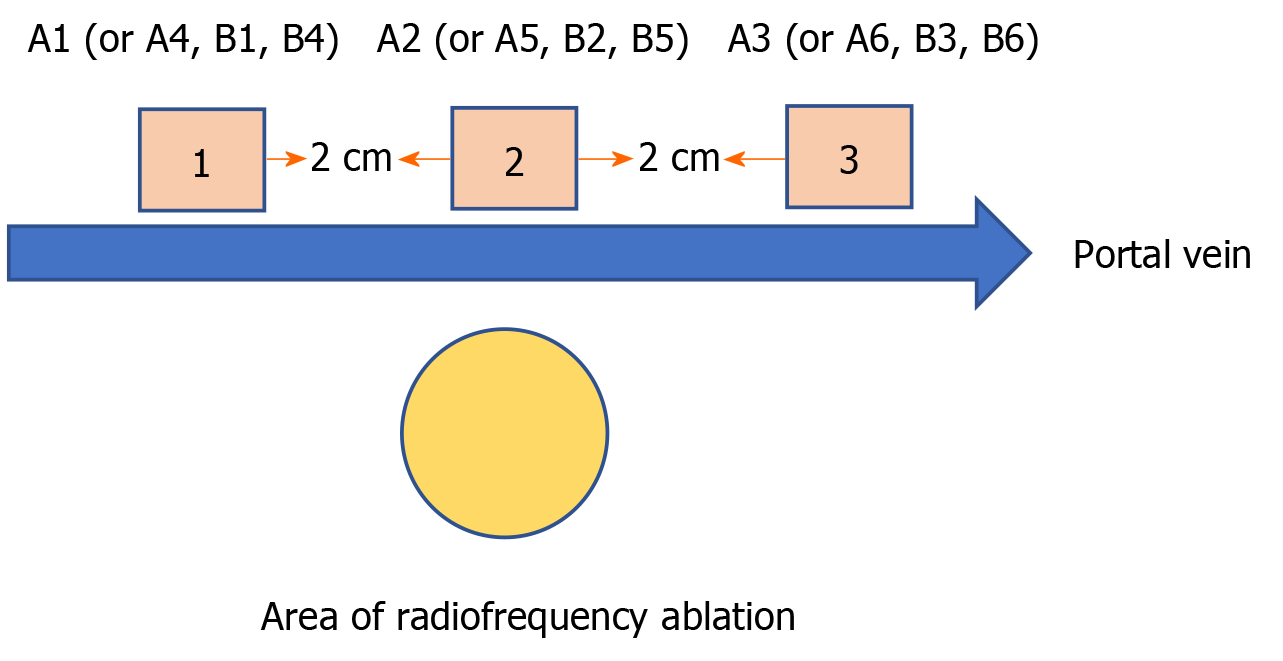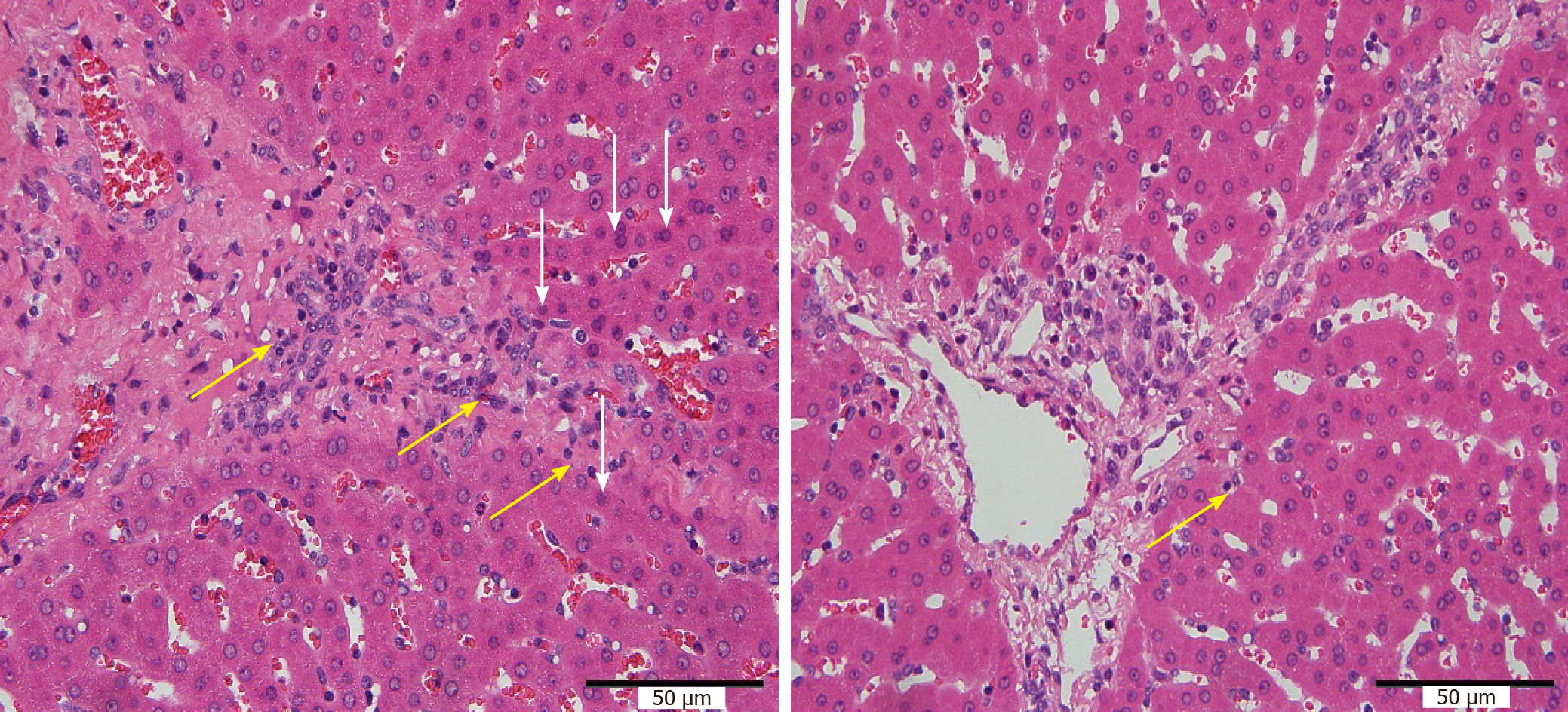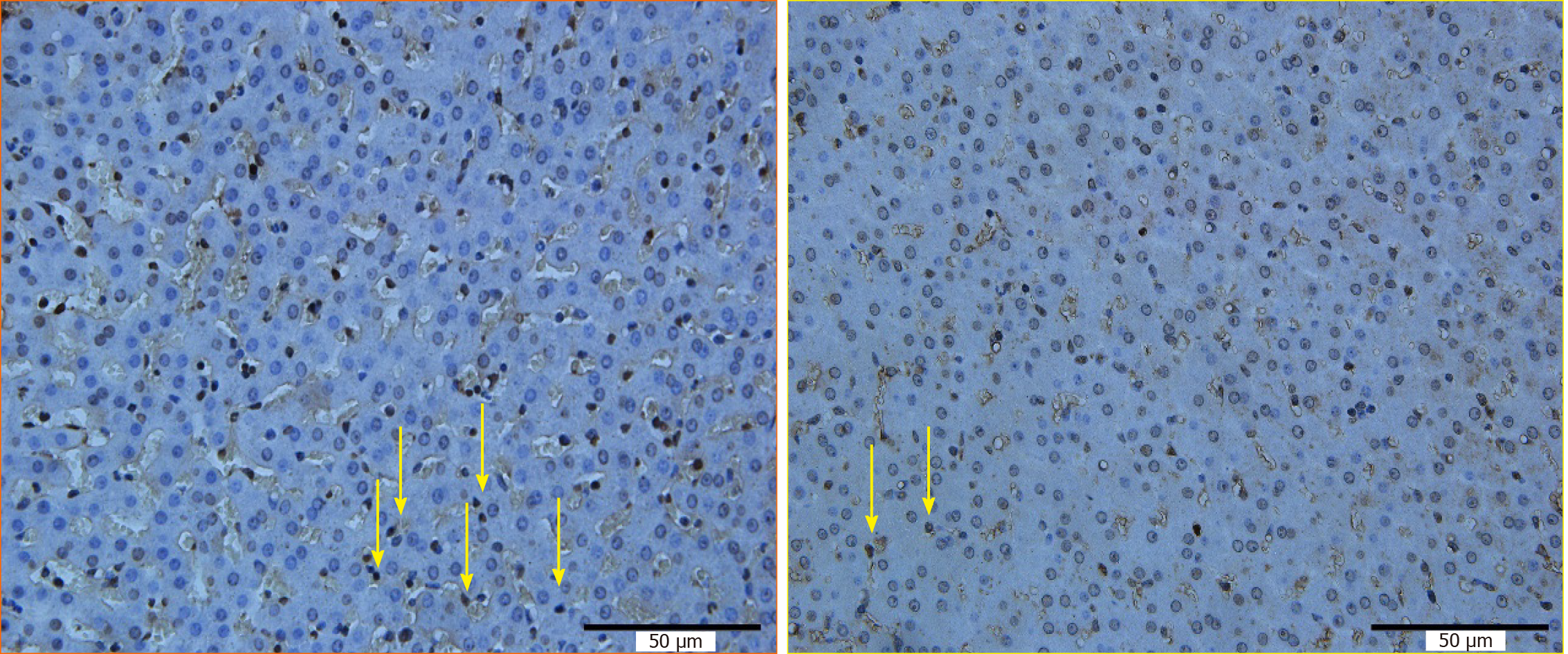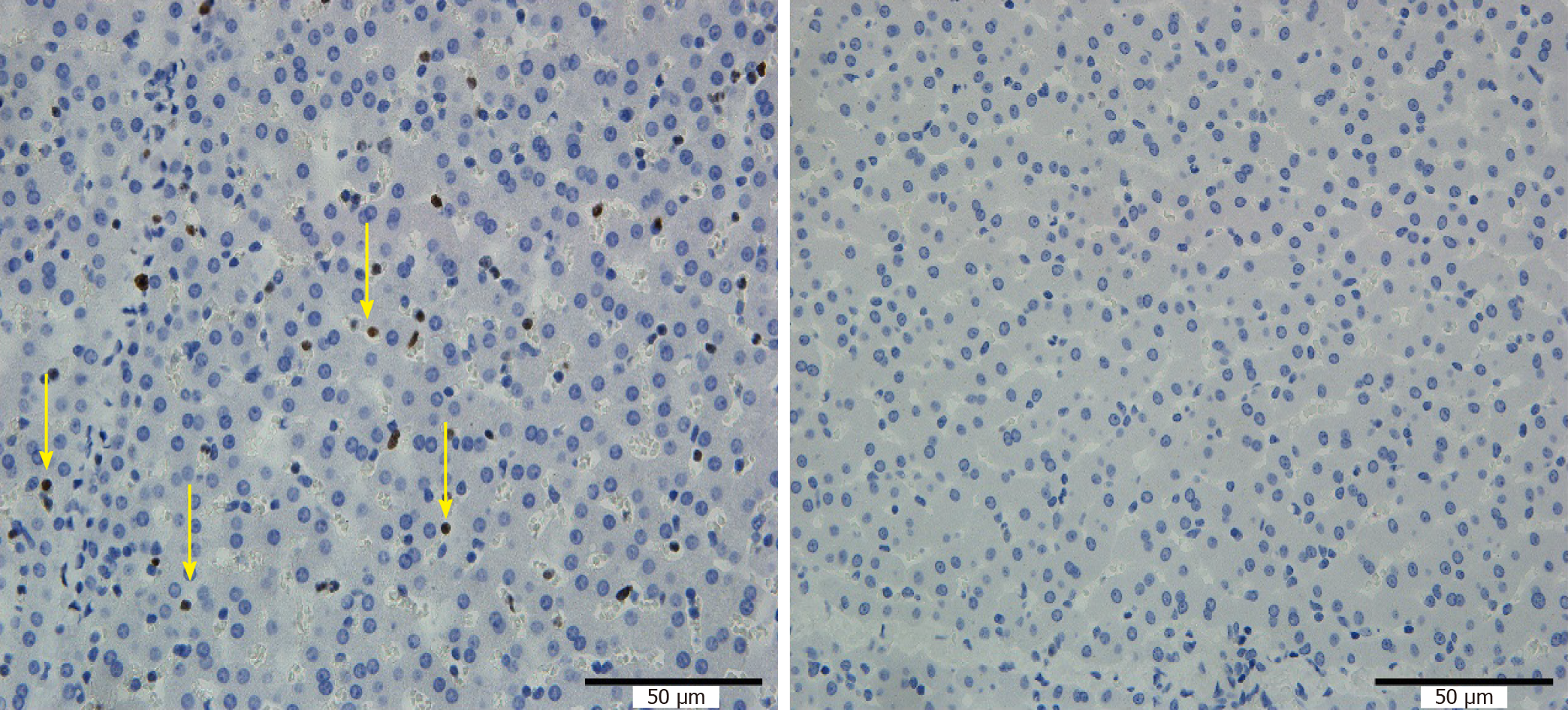Copyright
©The Author(s) 2021.
World J Gastrointest Oncol. Feb 15, 2021; 13(2): 109-118
Published online Feb 15, 2021. doi: 10.4251/wjgo.v13.i2.109
Published online Feb 15, 2021. doi: 10.4251/wjgo.v13.i2.109
Figure 1 Radiofrequency ablation at a certain distance from the hepatic portal vein under ultrasound guidance (the white arrow points to the radiofrequency ablation probe and the orange arrow points to the hepatic segment portal vein).
Figure 2 Diagram of specimens.
Figure 3 Liver after radiofrequency ablation (the black arrow points to the coagulation necrosis area, the orange arrow points to the inflammatory response zone, and the blue arrow points to the hepatic segment portal vein).
Figure 4 Diagram of hematoxylin-eosin staining results (400 ×).
The left figure shows that in the liver tissue around the distal portal vein beyond the radiofrequency ablation site in group A, there were more necrotic cells and slightly serious cell vacuolization, and more inflammatory cell infiltration. The right figure shows that in the liver tissue around the distal portal vein beyond the radiofrequency ablation site in group B, there were fewer necrotic cells, less serious cell vacuolization, and less inflammatory cell infiltration.
Figure 5 Diagram of TUNEL detection results (400 ×).
The left figure shows the liver tissue around the radiofrequency ablation site and the distal portal vein in group A where there was more liver cell apoptosis. The right figure shows the liver tissue around the radiofrequency ablation site and the distal portal vein in group B where there were less liver cell apoptosis.
Figure 6 Diagram of Ki67 staining results (400 ×).
Ki6 staining was positive in A2, A3, A5 and A6, as shown in the left figure, and not in the other groups, as shown in the right figure.
- Citation: Feng J, Wang S, Jiang K. Influence of the heat irrigating effect of radiofrequency ablation on regional liver tissue in Bama miniature pigs. World J Gastrointest Oncol 2021; 13(2): 109-118
- URL: https://www.wjgnet.com/1948-5204/full/v13/i2/109.htm
- DOI: https://dx.doi.org/10.4251/wjgo.v13.i2.109














